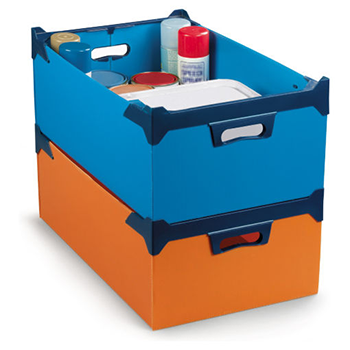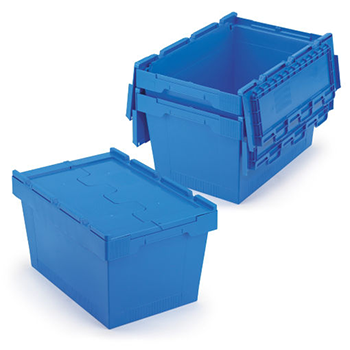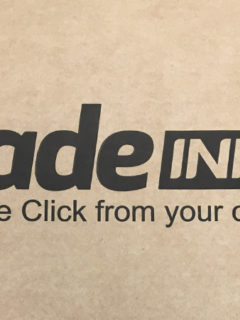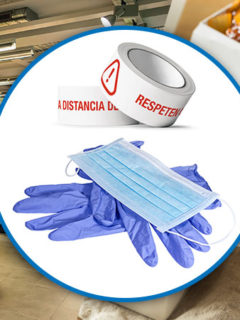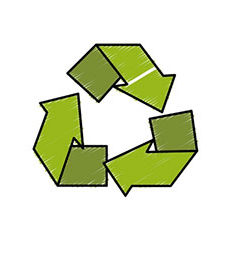Environmental concerns in the packaging and logistics sectors have led to the rise of Returnable Transport Packaging (RTP), a type of reusable packaging that is set to grow in use over the next few years. In fact, a study by ResearchAndMarkets puts this growth at 7.18% for the period 2018-23.
The increasing adoption of RPCs is already driving process changes in the packaging and logistics industry. Get ready for the green revolution: here’s everything you need to know about RPCs and how you can incorporate them into your business’s product handling.
What is Returnable Transport Packaging (RTP)?
Returnable Transit Packaging (RTP) is a container designed for the storage and transfer of various types of products in repeated cycles. Unlike single-use packaging, which is discarded once it has served its purpose, RTP is washed, stacked and folded, and returned to the originating company so that it can be reused for the transport and marketing of its goods.
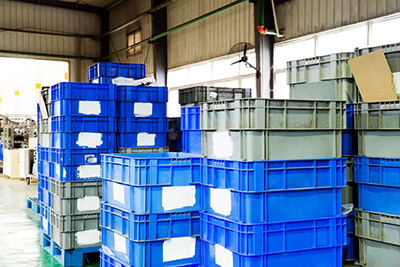
With proper maintenance, RPCs can handle dozens or even hundreds of trips. They are widely used in the food and automotive sectors, but the need to protect the environment and save costs has aroused the interest of other companies, such as pharmaceuticals and electronics.
RPC logistics cycle
To ensure that RPCs are indeed returned to the hands of their original owner and can be reused, the following supply chain process is usually followed:
- Apart from the price of the goods, the producing or distributing company charges the receiving companies or shops an extra deposit.
- When the purchasing firm puts the products into its warehouse, using its own packaging, or when it distributes them to the shops and they are sold, it must return the RPCs to its supplier to recover the deposit.
- Depending on the type of goods transported, the RPCs will be subject to more or less stringent cleaning, and the cycle starts all over again!
In order to correctly assess the costs of supply chain activities, it is necessary to establish who is responsible for stacking or folding the RPCs, and who is responsible for washing them – the supplier or the customer. A third actor may also come into play, a business dedicated to the rental and maintenance of RPCs for external companies.
It should also be noted that if the RPCs are nestable or foldable, their volumetric weight will be considerably lower on the return journey.
Benefits of the expansion of RPCs in the packaging world
The widespread use of RPCs in logistics has the following advantages:
- Environmental friendliness: The reduced consumption of single-use packaging reduces the volume of waste generated by the sector and, consequently, environmental pollution.
- Cost savings: While it is true that a RPC is more expensive than single-use packaging, when the former reaches a certain number of uses it becomes more cost-effective and financially sustainable than the latter option.
- Accessibility of goods in transit: Unlike traditional packaging, RPCs can be opened and closed multiple times to check the condition of the goods or remove parts of the goods at any point in the supply chain.
- Simplification of tasks: Product packaging is often simpler and faster with a RPC than with a system based on cartons, strapping, tape, fillers, etc
- Robustness: Returnable transport packaging is secure and robust, ensuring that goods travel well protected and safe from knocks and damage.
- Compatibility with smart packaging elements. It is easy to associate tracking devices or temperature and humidity control devices to RPCs, and they can also be used in subsequent shipments without having to be diverted to other packaging.
Types of Returnable Transport Packaging (RTP)
Rajapack has a wide variety of plastic boxes for storage, high quality RPCs that include models with standardised measurements for transport within Europe. Among our references you will find:
- Plastic boxes with grids, ideal for agricultural, textile and food products.
- Stackable boxes made of honeycomb polypropylene, resistant to water and chemical agents, for pharmaceutical, mechanical, electronic or textile products.
- Stackable plastic crates to European standards for use with Euro pallets.
- Stackable plastic containers with movable, interchangeable or hinged lids.
Go green with Rajapack, we have the best eco-friendly packaging solutions on the market!











